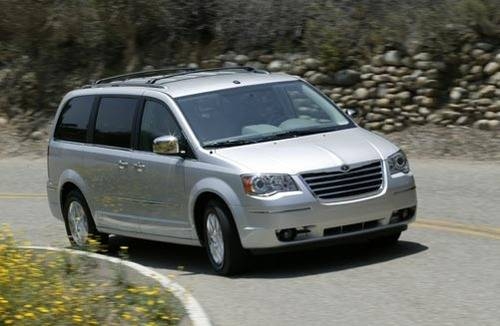
If you are the proud owner of a Chrysler 3.3L van, you have purchased one of the most fuel-efficient vans on the market. In current consumer guides, it ranks fourth in fuel efficiency nationwide. It's still a van, though, and is therefore heavy by design. In the 2009 model, drivers get an average 18 miles per gallon (MPG) in town and 25 MPG on the highway. The key word is "average." That means there are some owners who are regularly getting 33 to 35 MPG while others are chugging along at 12. If you're getting less-than-average mileage or would like to take steps to ensure you're achieving the maximum possible fuel efficiency, follow the steps in the guide below.
Get your lead foot off the gas pedal. Even though you have a V-6, pretend it's just a 4 cylinder and drive accordingly. It's a minivan, not a sports car. Speeding costs you money in more ways than one. Driving 55 to 60 will improve your fuel efficiency by approximately 7 percent, which saves you gas and money. As a bonus, you won't have to worry about speed traps and hidden cameras.
Glide when you can. Slamming on your breaks and screeching to a halt is hard on the vehicle and burns your fuel unnecessarily. When approaching a stop, take your foot off the gas and gradually slow down. Allow the van to coast when traveling downhill and you can improve your mileage by 10 to 15 percent.
Remove any excess weight. If you don't need it for the trip you're taking, remove the back seat. Don't store unnecessary items in the van, and make sure all snow and ice are removed prior to driving. Unpack the van as soon as possible rather than driving around with it full of groceries, luggage, sporting goods, etc. Every 100 pounds you lug around decreases your mileage by 1 percent.
Change your air filter. This step alone can improve fuel efficiency by 5 to 10 percent. A good portion of the current mileage improvement gadgets on the market function by improving the engine's air intake which results in more-efficient combustion. Or replace your current air filter with a re-useable one, and make sure you clean it at least once every other month or every 3,000 miles.
Check the inflation on your tires to be sure you're not driving on under-inflated wheels. When the time comes, replace your current tires with radials. The switch to radials, combined with maintaining proper inflation rates, can improve mileage and lower fuel consumption by 7 to 12 percent.
Keep your engine maintained and well-tuned to run at its optimum level. That includes getting new plug wires and replacing the oxygen sensor at least once every 50,000 miles. Make sure you use synthetic blends when having the oil changed. These improvements combined can increase your efficiency by up to 20 percent.
Turn off the air conditioning when driving less than 40 miles per hour. There is some debate as to which is most damaging to your fuel efficiency--using the air conditioning when traveling on the highway which burns fuel, or opening windows which makes the van less aerodynamic. Both will lower your overall performance, but when the temperature soars you have little choice but to select one. If you live in a moderate climate, you can line the windows with sun-blocking film and turn the vents on high to provide air circulation. This is not likely to provide enough comfort for passengers when temperatures rise above 90 degrees Fahrenheit.
Replace your fuel cap. Gasoline evaporates and the seals of your gas cap wear out over time, giving you a less than perfect fit. Also, try to fill up when your gas gauge is around the half-tank mark. This not only keeps you from running out of gas, but it can increase your mileage by up to 4 miles per gallon on average.